Erlitou Ruins Travel Guide: Discovering China’s Forgotten Kingdom
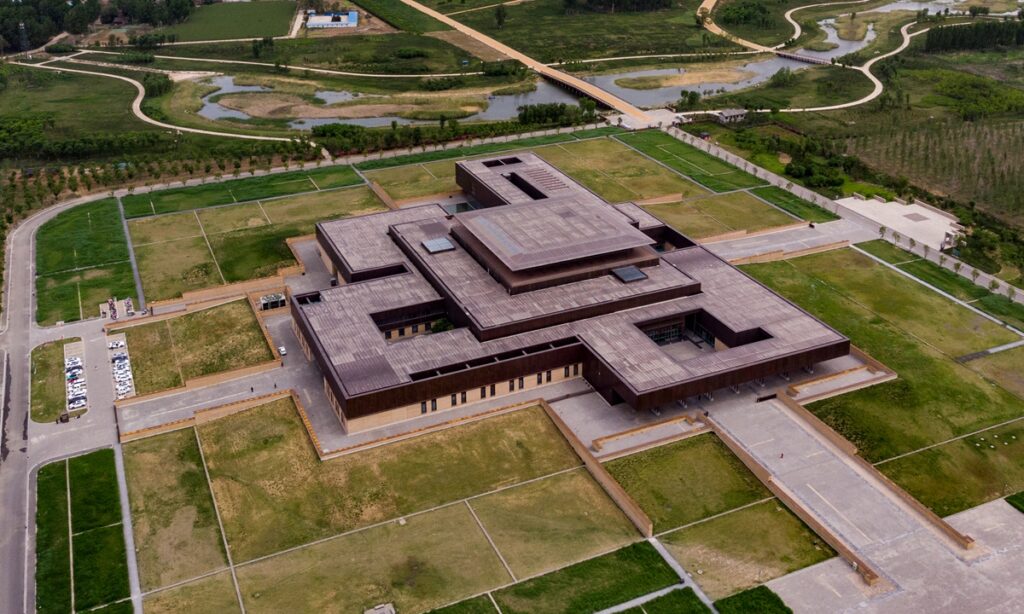
An Essential Guide to Visiting Erlitou Ruins
In This Guide
- An Essential Guide to Visiting Erlitou Ruins
- The Rich History and Legends of Erlitou Ruins
- Main Highlights: What You Absolutely Can’t Miss
- Planning Your Visit: A Practical Guide
- Tickets: Prices, Booking, and Tips
- How to Get There: A Complete Transportation Guide
- Local Cuisine and Accommodation Nearby
- Frequently Asked Questions
- Final Thoughts on Your Trip
Nestled in the heart of Henan Province, just a short drive from the historic city of Luoyang, lies one of China’s most significant archaeological treasures: the Erlitou Ruins. This ancient site, believed to be the capital of the legendary Xia Dynasty, offers a fascinating glimpse into the early Bronze Age and the formative years of Chinese civilization.
A Journey Through Time
Visiting the Erlitou Ruins is more than just a trip; it’s a journey through time. As you wander through the expansive archaeological park, which covers over 700,000 square meters, you’ll be stepping into a world that flourished between 1900 and 1500 BC. The remnants of palatial structures, vibrant workshops, and ritual districts reveal the complexity and sophistication of the Erlitou culture.
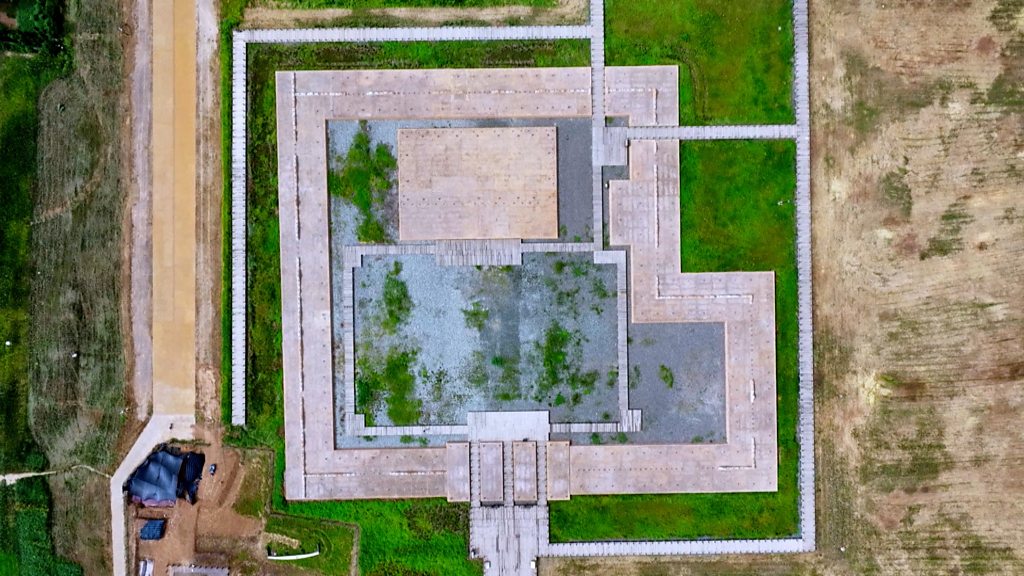
Erlitou Ruins.
What to Expect:
– Archaeological Marvels: Discover the earliest palace complex in China, featuring two main structures that reflect the architectural grandeur of their time.
– Artifacts and Exhibits: The nearby Erlitou Relic Museum showcases an impressive collection of artifacts, including intricate bronze vessels and tools that illuminate the daily lives of Erlitou’s inhabitants.
– Scenic Strolls: The park’s layout allows for leisurely exploration, with well-marked paths guiding you through the remains of this ancient city, complemented by beautiful natural surroundings.
Practical Information
- Location: Erlitou Village, Zhaizhen Town, Yanshi, Henan, China
- Opening Hours:
- Daily from 8:00 AM to 5:30 PM
- Closed on Mondays
- Admission: Free with valid ID
Tips for Your Visit
- Start at the Museum: Begin your adventure at the Erlitou Relic Museum to gain context on the site’s historical significance before exploring the ruins.
- Plan for Walking: Wear comfortable shoes, as exploring the park may require a fair amount of walking. Golf carts are available for those who prefer a quicker journey.
- Capture the Moment: Don’t forget your camera! The juxtaposition of ancient relics against the stunning backdrop of the Luo River creates picture-perfect moments throughout your visit.

Erlitou Ruins.
Whether you are a history buff, a culture enthusiast, or simply looking for a unique travel experience, the Erlitou Ruins promise an enriching encounter with China’s ancient past. Prepare to be captivated by the echoes of a civilization that laid the foundations of one of the world’s oldest cultures.
The Rich History and Legends of Erlitou Ruins
The Erlitou Ruins, a significant archaeological site in Yanshi, Henan Province, are steeped in history and legends that trace back to one of China’s earliest civilizations, the Xia dynasty. This ancient site not only provides a glimpse into the Bronze Age but also serves as a testament to the rich tapestry of Chinese cultural heritage.
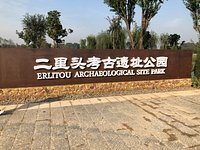
Erlitou Ruins.
A Glimpse into the Xia Dynasty
The Erlitou Ruins are believed to be the remnants of a major urban center that thrived between 1900 and 1500 BC. Many historians argue that this site was the capital of the Xia dynasty, China’s first recorded dynasty, although this claim remains a topic of debate within the international archaeological community. The foundation of this belief stems from significant findings, including pottery, bronze artifacts, and remnants of an advanced urban layout.
Archaeological excavations, initiated by the distinguished scholar Xu Xusheng in 1959, revealed the complexities of this ancient civilization. Erlitou was structured in distinct areas, including a palace complex, workshops, and burial sites, indicative of a society with social stratification and specialized craftsmanship. The presence of large-scale kilns and workshops suggests that Erlitou was a hub for bronze production, marking it as a pivotal point in the development of early Chinese metallurgy.
Legends and Cultural Significance
The Erlitou Ruins are not just a site of historical importance; they are also intertwined with legendary narratives that have shaped Chinese culture. One of the most compelling legends associated with the Xia dynasty is the tale of its founder, Emperor Yu the Great. Known for his legendary efforts in flood control, Emperor Yu is celebrated for his wisdom and perseverance. According to folklore, he traversed treacherous terrains to tame the waters that plagued the land, ultimately leading to the establishment of the Xia dynasty. This narrative symbolizes the triumph of human spirit and governance, echoing through centuries of Chinese history.

Erlitou Ruins.
Moreover, the ruins are often linked to the mythology surrounding the Yellow River, the cradle of Chinese civilization. Many legends speak of the river as a divine entity, entwined with the lives of those who inhabited its banks. The connection between the Erlitou site and the Yellow River emphasizes the importance of natural elements in early Chinese thought and how these elements were revered in the cultural fabric of society.
The Archaeological Legacy
The archaeological significance of Erlitou extends beyond its historical context. The site has become a crucial part of the narrative surrounding the origins of Chinese civilization. The artifacts unearthed here provide invaluable insights into early Chinese society, including social structures, technological advancements, and cultural practices.
In 2019, the Erlitou Relic Museum was inaugurated, serving as a gateway for visitors to explore the ancient wonders of the site. The museum features an impressive collection of artifacts, including bronze vessels and pottery, which narrate the story of the Erlitou culture. The layout of the museum allows for an immersive experience, guiding visitors through the history and significance of the Xia dynasty, thus preserving and promoting this vital chapter of Chinese heritage.

Erlitou Ruins.
Visiting Erlitou Ruins
For travelers keen on delving into China’s profound historical narrative, a visit to the Erlitou Ruins offers an enriching experience. The site, located approximately 4 kilometers from the Erlitou Relic Museum, is easily accessible and invites exploration of its vast archaeological park. As you walk through the remnants of this ancient civilization, you can almost hear the echoes of history, feel the weight of legends, and appreciate the ingenuity of early Chinese society.
In conclusion, the Erlitou Ruins stand as a testament to the rich history and legends of the Xia dynasty. They are a must-visit for anyone interested in understanding the complexities of China’s ancient past and the enduring cultural narratives that continue to shape its identity today.
Main Highlights: What You Absolutely Can’t Miss
Unveiling the Mysteries of the Erlitou Ruins
As one of the most significant archaeological sites in China, the Erlitou Ruins provide a fascinating glimpse into the early Bronze Age and the elusive Xia dynasty. Situated in Yanshi, Henan province, this site is a must-visit for travelers intrigued by ancient history and culture. Here are the main highlights that you absolutely can’t miss when exploring this remarkable destination.

Erlitou Ruins.
1. Erlitou Relic Museum
Your journey should begin at the Erlitou Relic Museum, which opened its doors in 2019. This modern museum houses a wealth of artifacts unearthed from the ruins, offering invaluable insights into the Xia dynasty and Bronze Age culture.
- Exhibits: The museum displays a variety of ancient bronzes, pottery, and tools, each piece telling a story of the sophisticated civilization that once thrived here.
- Signage and Accessibility: With well-laid-out exhibits and informative signage in English, the museum ensures that visitors can appreciate the rich history without language barriers.
- Facilities: Don’t miss the smaller side building, which features a welcome center with a coffee shop and a video presentation on the site’s historical significance.
2. The Archaeological Park
After exploring the museum, take a short walk or hop on a golf cart to reach the Erlitou Archaeological Park, which covers an expansive area of approximately 700,000 square meters.
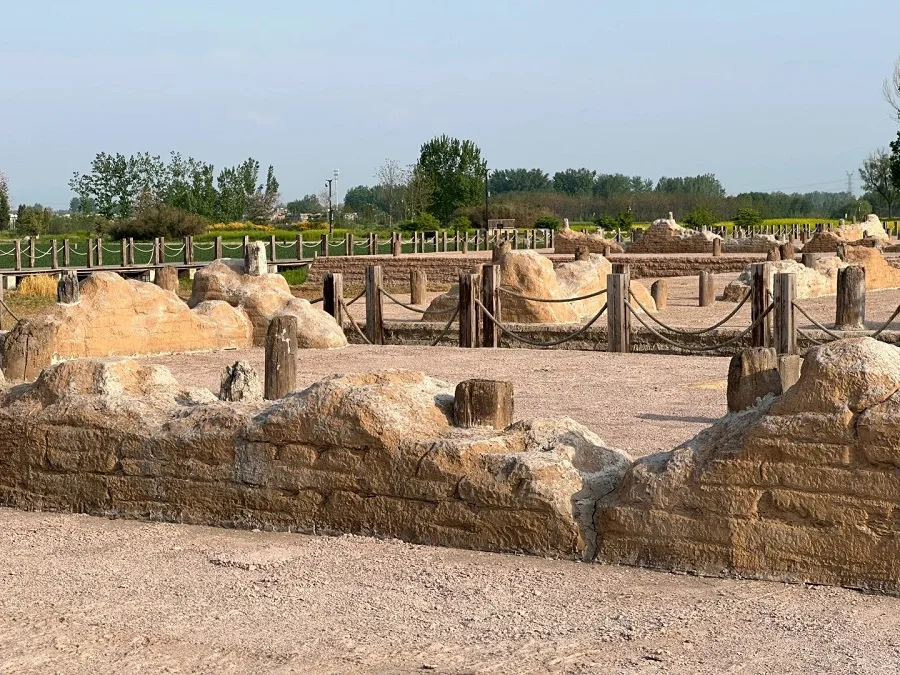
Erlitou Ruins.
- Palace Complex: The highlight of the park is the palace area, home to China’s earliest palace complex, which includes Palace No. 1 and Palace No. 2.
- Palace No. 1: This irregularly shaped structure spans about 9,600 square meters and serves as a testament to the architectural prowess of the time.
-
Palace No. 2: Rectangular in shape and measuring 4,200 square meters, this palace closely resembles later dynastic structures and showcases the evolution of Chinese architecture.
-
Ritual and Workshop Areas: Venture north to discover the ritual district, where ancient ceremonies likely took place, and the workshop area to the south, where skilled artisans produced pottery and bronze objects.
3. The Excavation Sites
While much of the excavation work is currently covered, the significance of the site cannot be overstated. The ruins reveal a city that was inhabited from approximately 1900 BC to 1500 BC, with a peak population of around 24,000 people.
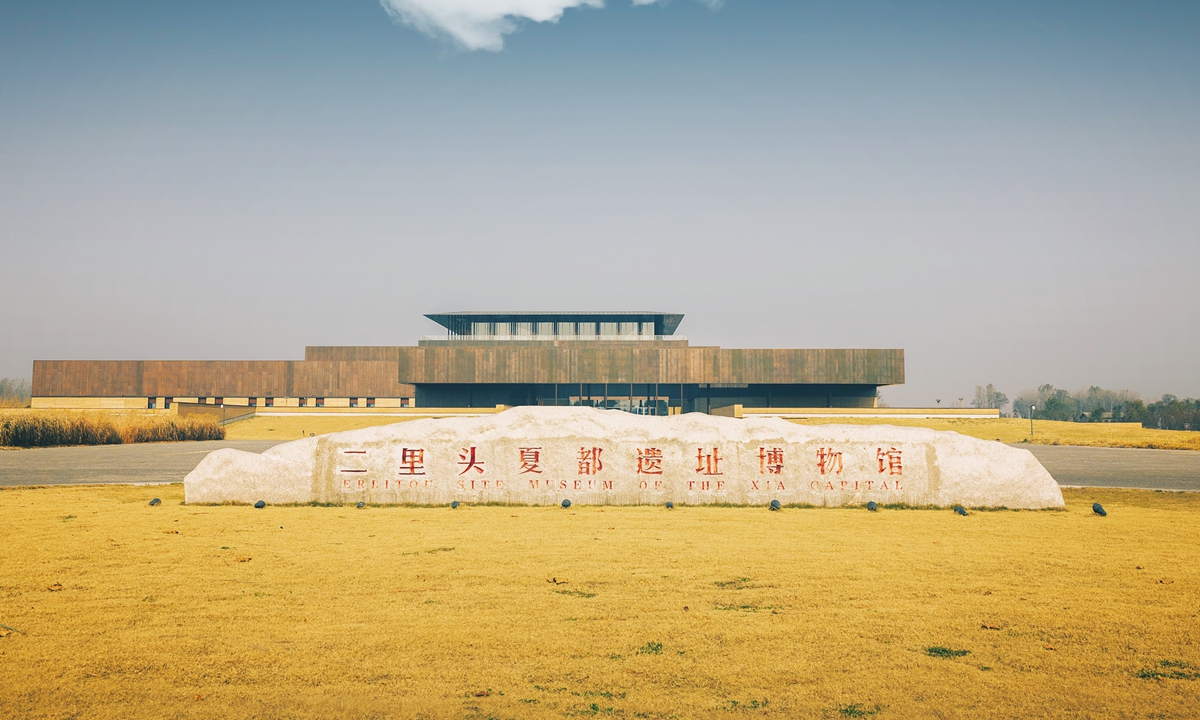
Erlitou Ruins.
- Road Networks: Explore the remnants of ancient roads that once connected different parts of this bustling city, showcasing its complexity and organization.
- Artifacts: Keep an eye out for significant finds, such as jade and turquoise items, which highlight the artisans’ craftsmanship and the trade networks of the time.
4. Historical Context
Understanding the broader historical context enhances your visit. The Erlitou site is often regarded as the capital of the Xia dynasty, a claim supported by many Chinese historians, although it remains a topic of debate among international archaeologists.
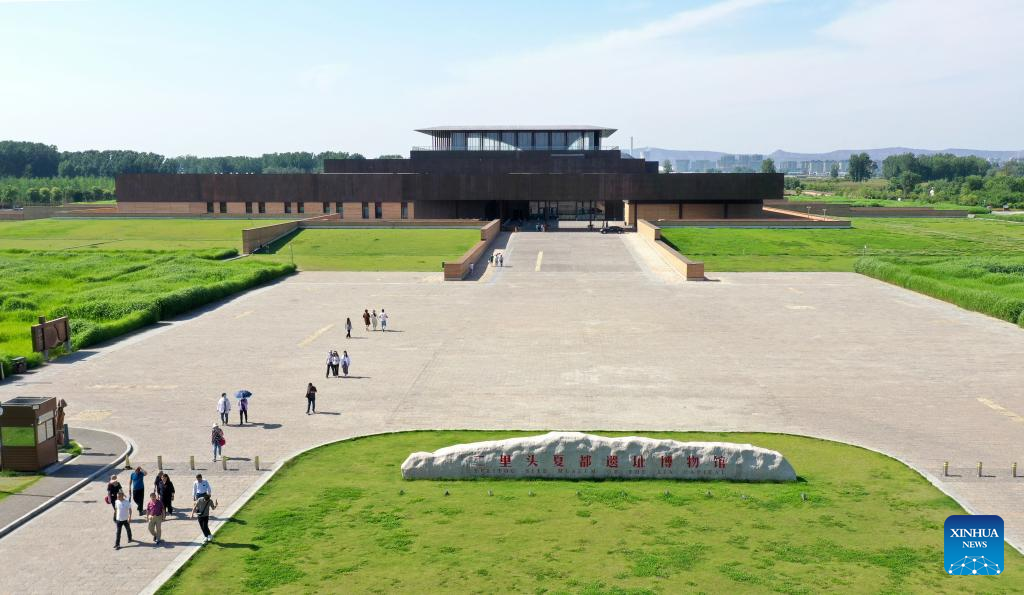
Erlitou Ruins.
- Cultural Significance: This site represents a crucial period in Chinese history, marking the transition from prehistoric to historic times, and provides essential insights into early Chinese governance, culture, and economy.
5. Visiting Information
- Location: The Erlitou Ruins are located approximately 4 kilometers from the museum and about an hour’s drive east of Luoyang.
- Opening Hours: The museum operates from 9 AM to 5 PM (closed on Mondays), while the archaeological park is accessible for exploration.
- Admission: Entry to both the museum and the ruins is free, although visitors must present a valid ID.
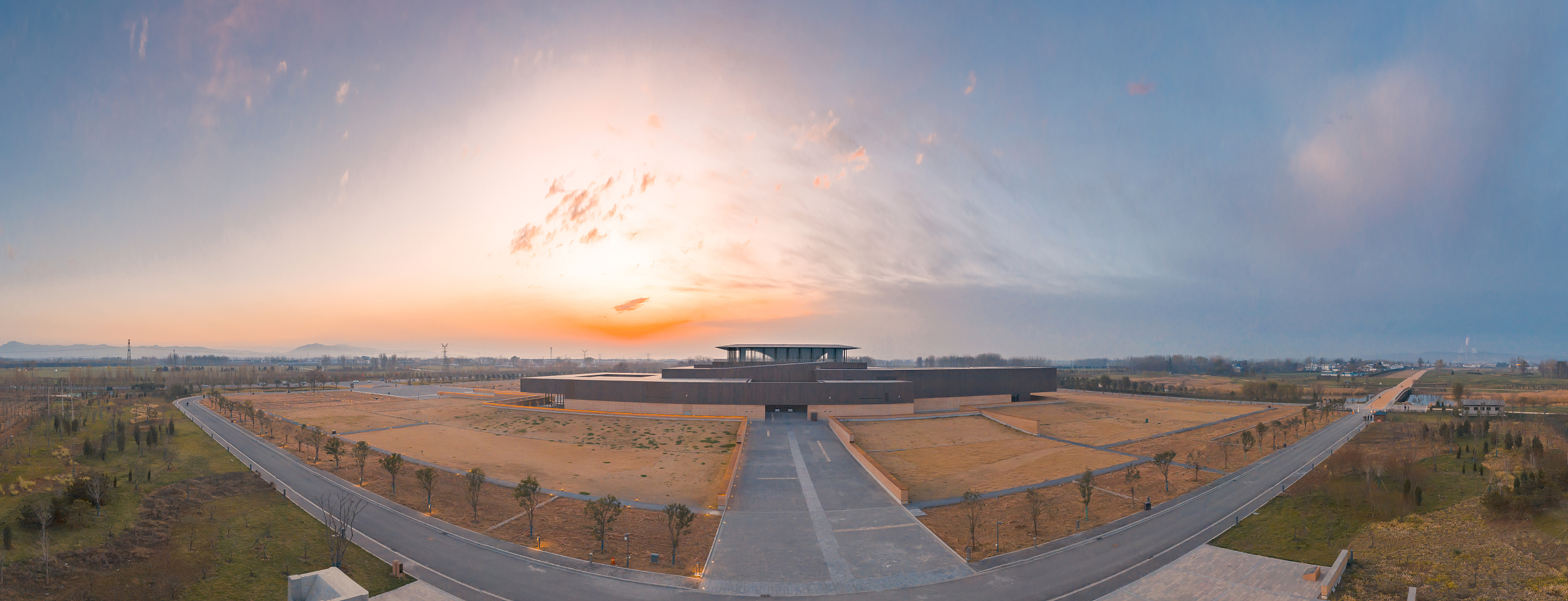
Erlitou Ruins.
Conclusion
A visit to the Erlitou Ruins is not just an exploration of ancient ruins; it’s a journey back in time that connects visitors to the origins of Chinese civilization. From the impressive displays in the Erlitou Relic Museum to the serene landscapes of the archaeological park, this destination offers an immersive experience that history enthusiasts will cherish. Don’t miss this opportunity to walk through the echoes of history and uncover the legacy of an era that laid the foundations for one of the world’s oldest continuous cultures.
Planning Your Visit: A Practical Guide
Your Guide to Visiting the Erlitou Ruins
Nestled in the heart of Henan Province, the Erlitou Ruins (二里头遗址) stand as a testament to China’s ancient civilization, specifically the Xia Dynasty. Our practical guide will help you navigate your visit to this fascinating archaeological site, ensuring you make the most of your journey through history.
Getting There
Location:
The Erlitou Ruins are located in Erlitou Village, Zhaizhen Town, Yanshi, approximately 4 kilometers from the Erlitou Relic Museum and about an hour’s drive from the city of Luoyang.

Erlitou Ruins.
By Car:
If you’re driving, take the G30 expressway towards Yanshi. Follow the signs to the Erlitou Site, which is well-marked.
Public Transport:
For those relying on public transport, local buses and taxis from Luoyang can be a convenient option. Ensure to check the latest schedules, as services may vary.
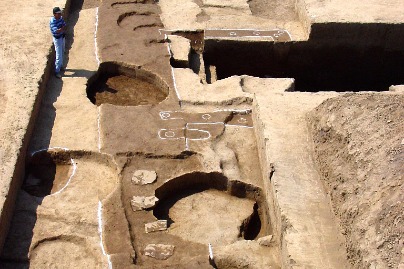
Erlitou Ruins.
Opening Hours
- Erlitou Ruins: Open daily from 8:00 AM to 5:30 PM.
- Erlitou Relic Museum: Open from 9:00 AM to 5:00 PM (last entry at 4:00 PM), but closed on Mondays.
Admission Fees
- Entrance: Free, but visitors must present valid ID.
- Guided Tours: Consider joining a guided tour for a deeper understanding of the site’s historical significance.
What to See
-
Erlitou Relic Museum: Before exploring the ruins, the museum offers a comprehensive introduction to the Xia Dynasty, showcasing ancient artifacts and bronze culture from various dynasties including the Shang, Zhou, Qin, and Han. The museum is known for its modern displays and informative signage, including English translations.
-
Erlitou Ruins: After visiting the museum, take a leisurely walk (or a golf cart if available) to the archaeological site. The ruins span about 700,000 square meters and include:
- Palace Complex: Explore the remains of the earliest known palace complex in China, featuring two main palatial structures surrounded by a thick earthen wall.
- Ritual Buildings and Workshops: Discover where ancient artisans crafted pottery and bronze objects, highlighting the advanced skills of the Erlitou civilization.
- Road Network: Walk along the ancient roads that connected various parts of the site, immersing yourself in the daily life of its inhabitants.
Tips for Your Visit
- Wear Comfortable Shoes: The site involves walking, so comfortable footwear is essential.
- Plan Ahead: Allocate at least two to three hours for your visit to fully appreciate both the museum and the ruins.
- Bring Water and Snacks: While there may be eateries nearby, it’s wise to carry refreshments, especially if visiting during warmer months.
- Photography: Capture the beauty of the ruins and museum exhibits, but be respectful of any restrictions on photography.
Nearby Attractions
After your visit to the Erlitou Ruins, consider exploring other nearby attractions, including:
– Wang Zijin Monument: A historical statue located just a short distance away.
– Yanshi Shangcheng Museum: Dive deeper into the local history with exhibits that complement what you learned at the Erlitou site.
Conclusion
A visit to the Erlitou Ruins is not just an exploration of ancient architecture but a journey into the very foundations of Chinese civilization. With its rich history and well-preserved artifacts, Erlitou is a must-see for anyone interested in understanding the early dynastic periods of China. Prepare yourself for an unforgettable experience that connects you with the diverse tapestry of China’s past.
Tickets: Prices, Booking, and Tips
Visiting the Erlitou Ruins and the Erlitou Relic Museum is a captivating journey into one of China’s earliest civilizations. Here’s everything you need to know about ticketing, pricing, and tips to enhance your experience at this historical site.
Ticket Information
Entrance Fees
- Erlitou Relic Museum: Free admission.
-
Valid ID is required for entry.
-
Erlitou Ruins: Free access, which is part of the Erlitou Archaeological Site Park.
Hours of Operation
- Erlitou Relic Museum:
- Open: 9:00 AM – 5:00 PM
- Last Entry: 4:00 PM
-
Closed: Mondays
-
Erlitou Ruins:
- Open: 8:00 AM – 5:30 PM (daily)
Booking Tips
While no advance booking is required due to free admission, here are a few tips to ensure a smooth visit:
-
Plan Your Visit: Aim to start your day early to make the most of your time at both the museum and the ruins. A visit to the museum first is recommended to gain context about the exhibits and the significance of the archaeological site.
-
Check for Updates: Visit the official Erlitou Site Museum website or local tourism pages for any changes in hours or special events that may affect your visit.
-
Guided Tours: If you prefer a more in-depth experience, consider joining a guided tour. Local guides can provide valuable insights into the history and significance of the Xia Dynasty and the artifacts on display.
Accessibility and Facilities
-
Transportation: The Erlitou Ruins are located about 40 minutes from the center of Yanshi and about an hour from Luoyang. Renting a car or using local taxis can simplify your travel.
-
On-Site Facilities:
-
The Erlitou Relic Museum features a welcoming center that includes a coffee shop and a gift shop, perfect for a quick refreshment or to purchase souvenirs.
-
Golf Carts: For those who prefer not to walk, golf carts are available to transport visitors from the museum to the ruins.
Visitor Experience
-
Duration: Expect to spend around an hour exploring the archaeological site. The museum visit may take an additional hour or more, depending on your interest in the exhibits.
-
Photography: The site offers numerous photo opportunities, particularly in the museum and the surrounding park areas. Be sure to capture the impressive architecture and displays.
By following these guidelines, you can fully immerse yourself in the rich history of the Erlitou Ruins and the Xia Dynasty, making your visit both enjoyable and informative.
How to Get There: A Complete Transportation Guide
Getting to the Erlitou Ruins: A Comprehensive Transportation Guide
Visiting the Erlitou Ruins offers a unique glimpse into ancient Chinese history, specifically the Xia Dynasty. Nestled in Yanshi, Henan Province, this archaeological site is easily accessible from major cities, making it an excellent addition to your travel itinerary. Here’s how to reach this remarkable destination.
By Air
The nearest airport to the Erlitou Ruins is Luoyang Airport (LYA), which is approximately 15 kilometers away. This airport services domestic flights from several major cities in China, including Beijing and Shanghai.
Alternative Airports:
– Zhengzhou Xinzheng International Airport (CGO): About 100 kilometers from Yanshi, this airport offers a wider range of domestic and international flights.
By Train
Traveling by train is a convenient option, particularly for those coming from neighboring cities. The Luoyang Railway Station serves as the primary hub for train services.
- From Beijing or Shanghai:
-
Take a high-speed train to Luoyang, which takes approximately 4-6 hours depending on the service.
-
From Zhengzhou:
- High-speed trains run frequently, covering the distance in about 1 hour.
Once you arrive at Luoyang Railway Station, you can opt for local transportation to reach the Erlitou Ruins.
By Bus
Intercity buses are available from various locations, including Luoyang and Zhengzhou. Buses from Luoyang Central Bus Station to Yanshi run regularly:
- Duration: Approximately 1 hour
- Frequency: Every 30 minutes
Upon arriving in Yanshi, you can take a taxi or rideshare service directly to the Erlitou Ruins.
Local Transportation in Yanshi
Once in Yanshi, navigating to the Erlitou Ruins is straightforward:
- Taxi: Taxis are readily available and can take you directly to the site. The fare should be around ¥30-¥50.
- Public Transport: Local buses also serve the route to Erlitou, but schedules may vary. Confirm the latest timings with local sources.
- Walking: If you’re already in Yanshi, the ruins are about a 30-minute walk from the town center.
Visiting the Site
The Erlitou Relic Museum is located about 4 kilometers from the Erlitou Ruins, making it an ideal first stop for your visit. Here’s how to make the most of your trip:
- Museum Hours: Open from 9 AM to 5 PM, closed on Mondays. Note that entry is not allowed after 4 PM.
- Entrance: Admission is free, but visitors must present valid ID.
- Transport between Museum and Ruins: A scenic walk takes about 20-30 minutes, or you can use the golf cart service available at the museum.
Conclusion
The Erlitou Ruins represent a significant chapter in China’s rich history, and reaching this archaeological gem is convenient and straightforward. With options ranging from air and rail to local buses and taxis, your journey to explore the ancient capital of the Xia Dynasty is just a few steps away. Plan your trip, and immerse yourself in the legacy of one of China’s earliest civilizations!
Local Cuisine and Accommodation Nearby
Savoring the Local Flavors and Finding Comfort Near the Erlitou Ruins
When exploring the rich tapestry of history at the Erlitou Ruins, it’s essential to complement your journey with a taste of the local cuisine and a comfortable place to rest after a day of discovery. Yanshi, the nearest town to the site, offers a selection of eateries and accommodations that will enhance your experience.
Local Cuisine
SiNian Lou
Just a short drive from the Erlitou Ruins, SiNian Lou is a popular spot among locals and visitors alike. This restaurant features traditional Chinese dishes that reflect the culinary heritage of the Henan province. Here, you can indulge in:
- Noodles: Henan is known for its hand-pulled noodles, often served in savory broths or stir-fried with fresh vegetables and meats.
- Dumplings: Try the steamed or pan-fried dumplings filled with pork, vegetables, or seafood.
- Braised Dishes: The local specialty of braised meats, often slow-cooked with rich spices, is a must-try.
While the restaurant’s ambiance is simple, the flavors will transport you straight into the heart of Chinese culinary tradition.
Accommodation Options
After a day of exploring the ancient Xia dynasty legacy, you’ll want a restful place to unwind. Here are a few recommended accommodations in Yanshi:
-
Yanshi Huaxin Hotel
A convenient choice for travelers, this hotel offers comfortable rooms with modern amenities. Located just a short drive from the Erlitou site, it provides easy access to local attractions. Enjoy a restful night’s sleep and start your day with a hearty breakfast before heading out to explore. -
Luoyang Yanshi Hotel
This hotel is slightly more upscale, offering well-appointed rooms and a variety of services. The on-site restaurant features a menu that includes local delicacies, giving you a taste of Henan’s cuisine without leaving the premises. -
Homestays in Erlitou Village
For a more immersive experience, consider staying at a homestay in Erlitou Village. These options allow you to connect with local families, enjoy home-cooked meals, and gain unique insights into the daily life of the residents. It’s an excellent way to enrich your travel experience while supporting the local community.
Final Thoughts
As you delve into the ancient history of the Erlitou Ruins, don’t overlook the opportunity to savor the local cuisine and rest comfortably. Whether you choose to dine at a local restaurant or stay in a quaint homestay, each experience will add depth to your journey through one of China’s significant historical sites. Enjoy every moment of your exploration!
Frequently Asked Questions
Frequently Asked Questions about Erlitou Ruins
1. What are the Erlitou Ruins?
The Erlitou Ruins, located in Yanshi, Henan Province, are significant archaeological remnants linked to the Erlitou culture, often associated with the Xia Dynasty, which is considered the first dynasty in Chinese history. The site features a complex of palatial structures and artifacts that provide insight into early Chinese civilization.
2. How do I get to the Erlitou Ruins?
The Erlitou Ruins are approximately 40 minutes by car from the city center of Luoyang. You can hire a taxi or use local transportation services to reach the site. For those preferring public transport, check local bus routes that connect to Yanshi.
3. What are the opening hours for the Erlitou Ruins and the museum?
The Erlitou Relic Museum is open from 9:00 AM to 5:00 PM, with the last entry at 4:00 PM, and it is closed on Mondays. The archaeological site is typically accessible during the same hours.
4. Is there an entrance fee?
Visiting the Erlitou Relic Museum is free of charge, but visitors must present valid identification. The archaeological park itself is also free, making it an accessible option for travelers.
5. What can I expect to see at the Erlitou Ruins?
The site includes the remains of a large palace complex, workshops, and a variety of artifacts such as pottery, bronze objects, and jade. The area showcases the layout of an ancient city, including a network of roads and ritual districts, providing a glimpse into the social and cultural life of the time.
6. How long does a typical visit take?
Plan for at least 2 to 3 hours to fully explore both the Erlitou Relic Museum and the archaeological site. The museum offers extensive information and displays, while the ruins can be walked through at a leisurely pace.
7. Are there any facilities available on-site?
Yes, there are facilities including restrooms, a welcome center with a coffee shop, classrooms, and a bookshop near the museum. Golf carts are also available to transport visitors between the museum and the ruins if the walk seems too long.
8. What should I know before visiting?
It’s advisable to visit the Erlitou Relic Museum before exploring the ruins to gain context about the artifacts and the historical significance of the site. Additionally, as with many tourist sites in China, it’s a good idea to check for up-to-date information regarding opening hours and any potential changes in accessibility.
Final Thoughts on Your Trip
As you conclude your journey to the Erlitou Ruins, you find yourself standing at the threshold of ancient Chinese civilization—a place where history echoes with the whispers of the Xia Dynasty. This archaeological site, located just outside Yanshi, is not merely a collection of artifacts; it is a gateway into the past, inviting you to explore the rich tapestry of early Chinese culture.
A Journey Through Time
Visiting the Erlitou Ruins is akin to stepping into a time machine, transporting you back over 3,000 years to a period that shaped the foundations of Chinese society. As you wander through the remnants of what may have been one of the earliest urban centers in China, take a moment to absorb the significance of what you see:
- Palatial Architecture: Imagine the lives of the elite who once inhabited the grand palaces, their footsteps echoing through history.
- Craftsmanship: Marvel at the intricate bronze and pottery artifacts, reminders of the skilled artisans who thrived here.
- Cultural Legacy: Reflect on how the innovations and traditions that emerged from this site laid the groundwork for future dynasties.
Recommendations for Your Visit
To fully appreciate the depth of this historical treasure, consider these tips:
- Start at the Erlitou Relic Museum: Here, you’ll find well-curated exhibits that provide context and insight into the significance of the ruins. This modern museum complements your exploration of the ancient site beautifully.
- Explore the Park: The surrounding archaeological park, with its expansive layout and well-marked paths, allows you to immerse yourself in the landscape that once bustled with life.
Final Reflections
As you conclude your exploration of the Erlitou Ruins, remember that your visit is not just about witnessing the past; it is also a journey of understanding and appreciation for the complexities of human history. The remnants of Erlitou remind us that every civilization has its roots, and by exploring them, we gain a richer perspective on our shared humanity.
So, as you leave this remarkable site, carry with you the stories of those who walked these grounds long ago. Let the echoes of the Xia Dynasty inspire your continued exploration of China’s vast historical landscape. Safe travels!